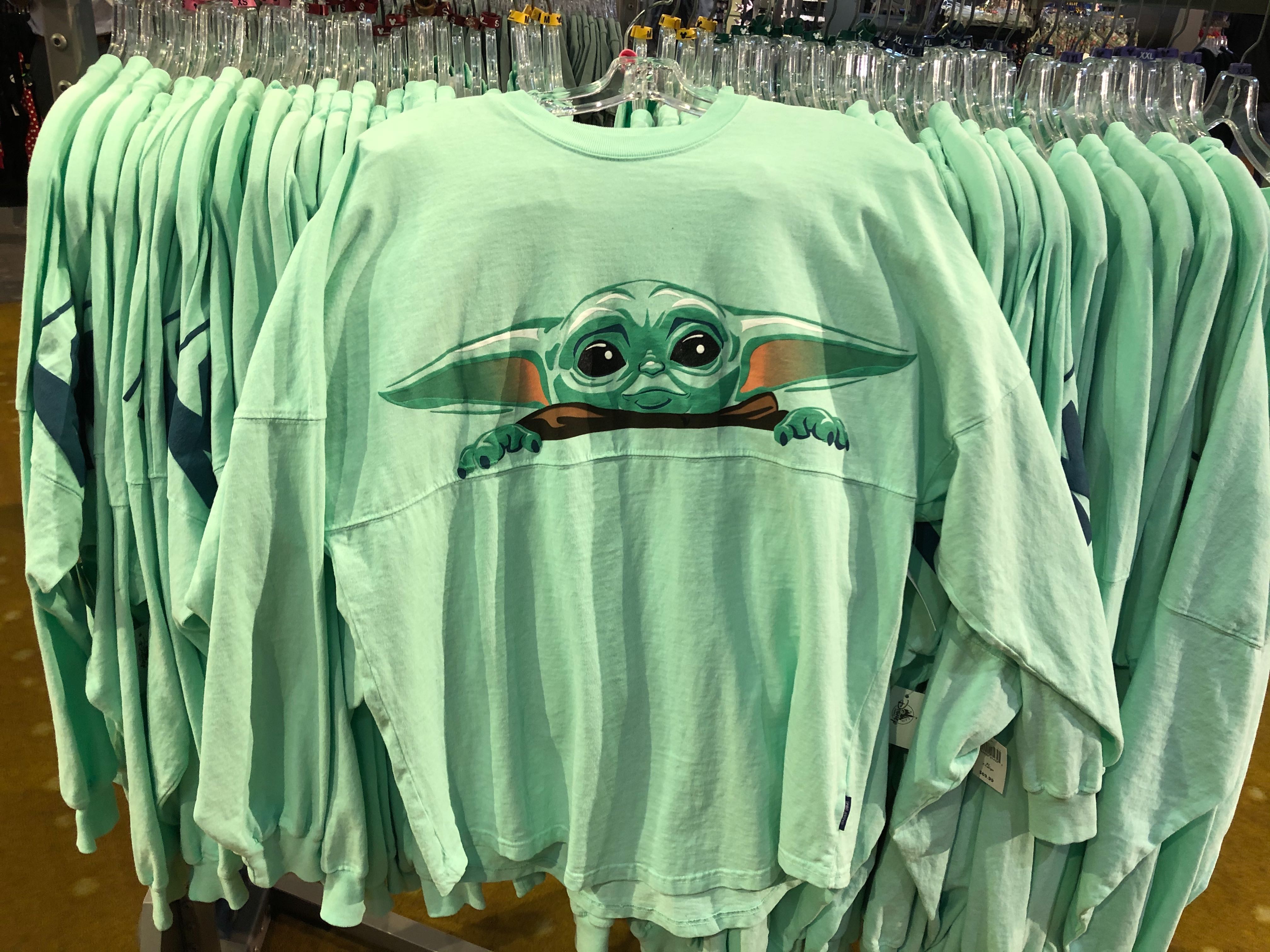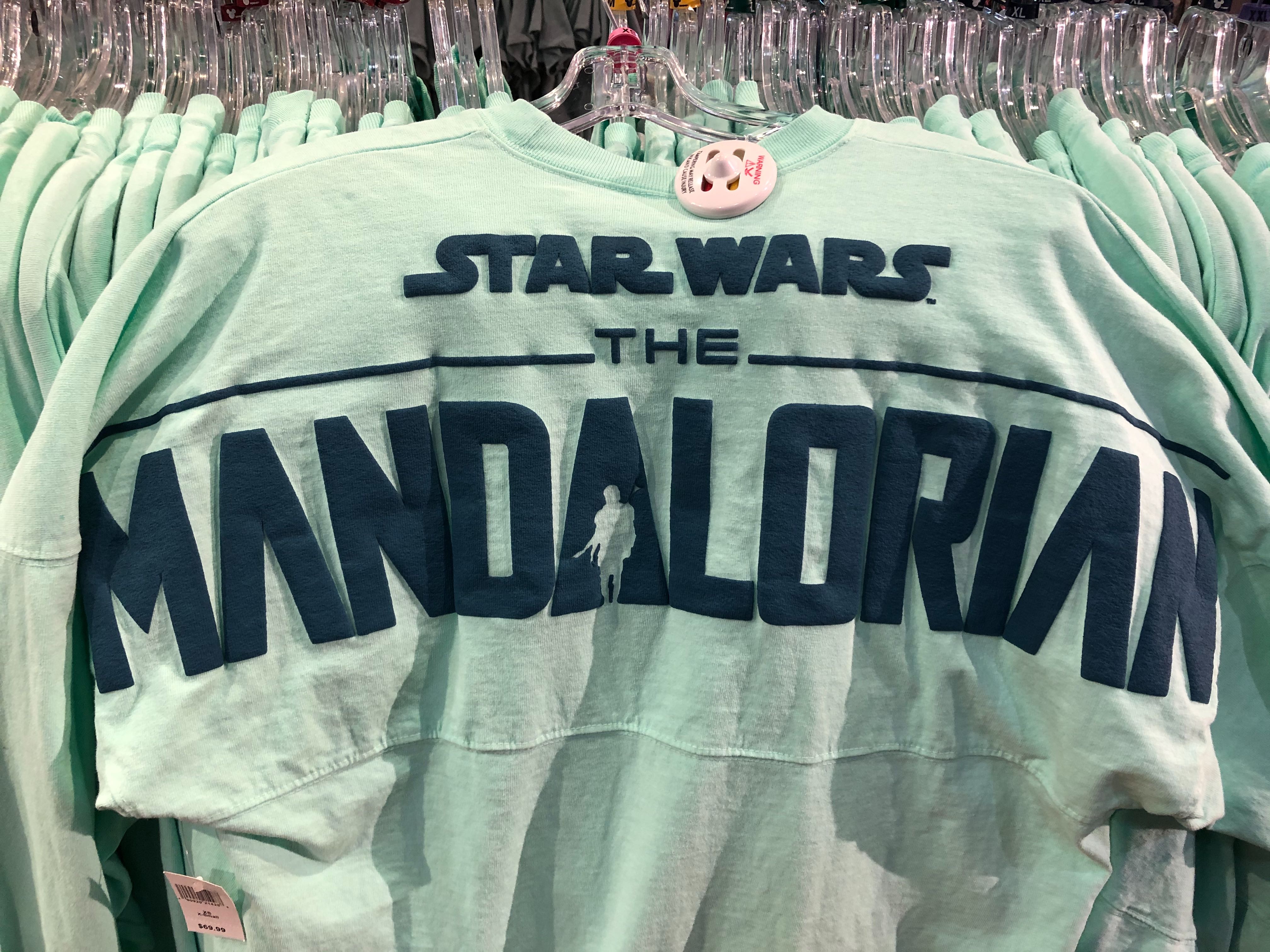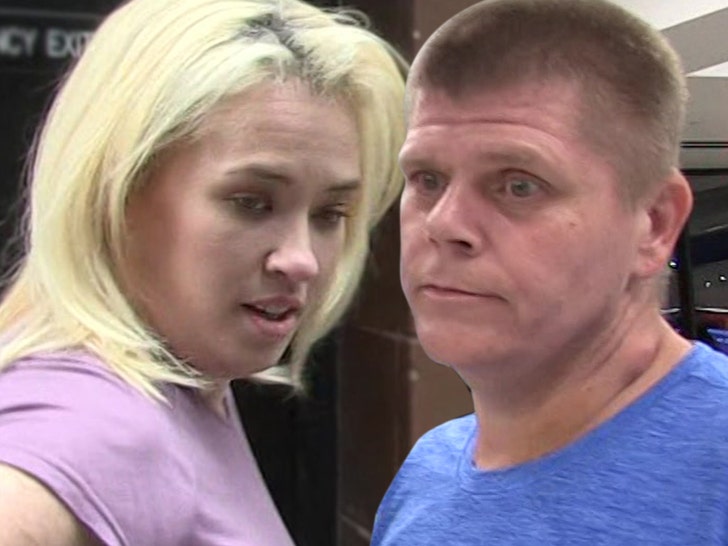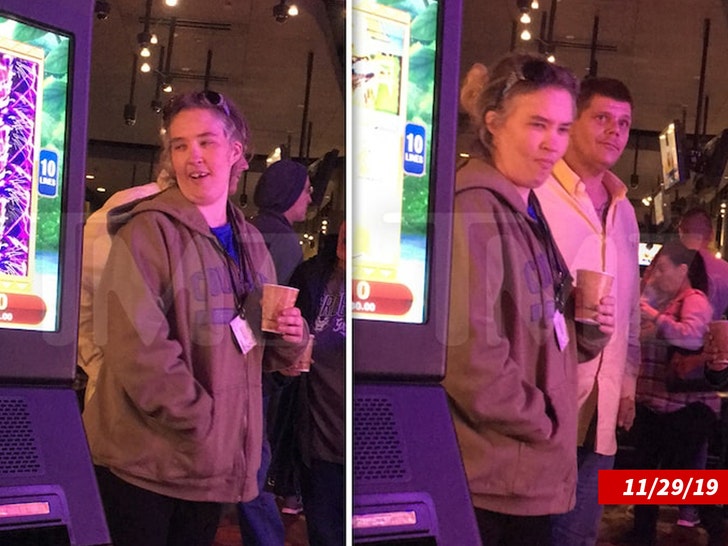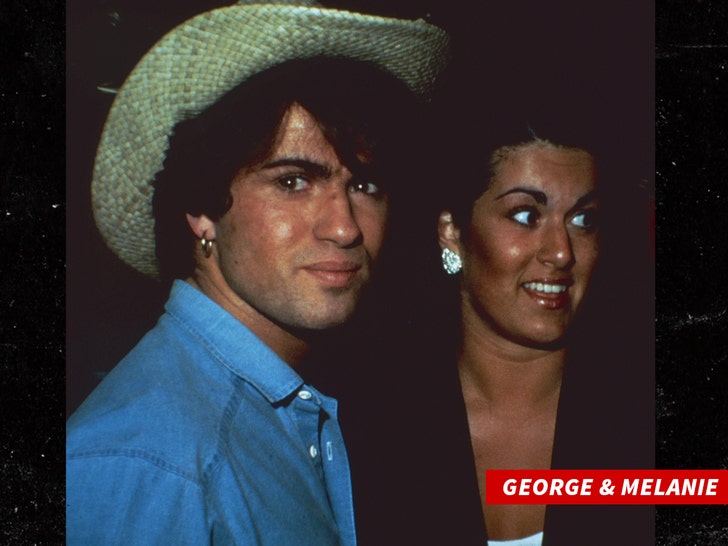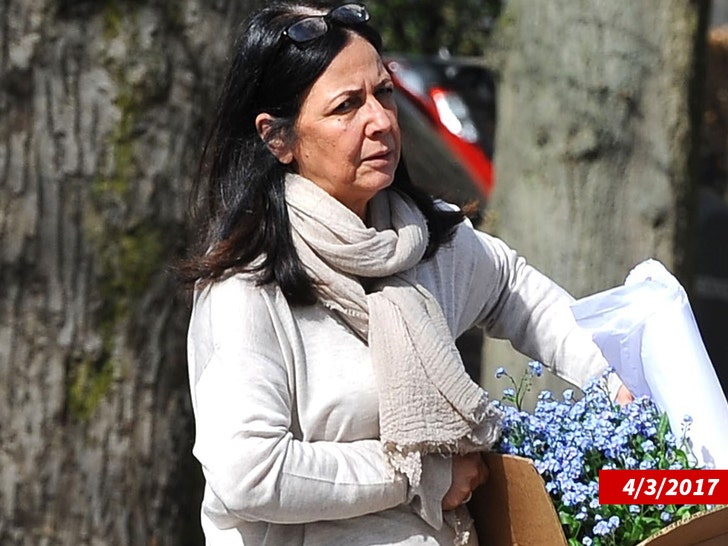:no_upscale()/cdn.vox-cdn.com/uploads/chorus_asset/file/19021663/spoiler_warning_v2.2.jpg)
The Mandalorian’s first-season finale, “Redemption,” features a hero who’s healed from a potentially fatal wound. The protagonist’s savior is a former antagonist who switches sides and makes the ultimate sacrifice to help the good guys win. Along the way, the finale finds time for one-on-one, ship-to-hand combat with a TIE fighter. It reveals previously secret names and origin stories. And, at the end, it offers a glimpse of a distinctive saber.
In each of those respects, it sounds a lot like The Rise of Skywalker. But whereas Rise seemed overstuffed with plot, MacGuffins, and fresh faces, “Redemption” is simple, stripped-down, and mostly limited to a handful of constant characters. Whereas Rise rushed through scenes on eight planets (with glimpses of several more), “Redemption” stays in one place and takes time to breathe. Whereas Rise seemed at war with early entries in the series, “Redemption” neatly follows from them and pays off the conflicts its predecessors set up. Whereas Rise trafficked in fake-outs and characters coming back from the dead, The Mandalorian’s fallen heroes aren’t resurrected. Whereas Rise didn’t demand that its main character question her beliefs, The Mandalorian forces its hero to reframe how he sees the world. And whereas Rise went out of its way to recycle scenarios and set pieces from its famous predecessors, The Mandalorian only lightly alludes to them, carving out its own autonomous territory inside the Star Wars mythos.
Granted, The Mandalorian wasn’t asked to be a billion-dollar blockbuster. It wasn’t tasked with tying up a nine-movie, five-decade epic. It wasn’t forced to bear the weight of constant comparisons to classic films and the nostalgia stalactites they’ve slowly excreted. Its stakes were smaller, its cast more contained, its backstory less sprawling. Those different demands lowered the difficulty level, but they also made The Mandalorian an opportunity for a fresh start. Here was a live-action Star Wars story that existed separately from the Skywalker saga, indebted to the past without being beholden to it. And in the eighth and final chapter of its first season, The Mandalorian makes good on the promise of stand-alone small-screen Star Wars, delivering a fulfilling finale that dispenses several meaningful moments for its recurring characters while deepening the intrigue surrounding its central villain and preserving the series’s main mystery for future seasons.
“Redemption” picks up where the previous chapter left off: The scout troopers who killed Kuiil and kidnapped Baby Yoda are carrying him back to town, and Moff Gideon and his death troopers have Mando, Cara, and Karga pinned down. Neither of those situations lasts long, thanks to IG-11’s heroics. Kuiil may have reprogrammed the former hunter droid as a nonviolent nurse, but the droid determines that Baby Yoda’s best defense is a good offense. IG-11 still packs plenty of firepower, and it’s happy to turn it on the infant’s foes.
“Redemption” is a showcase for Taika Waititi, a two-way star who directs the episode and also supplies IG-11’s droll delivery. This chapter features some of the series’s most humorous moments, and while showrunner Jon Favreau wrote the script, Waititi sells it and perhaps punches it up, from the first, extended scene between the two doomed troopers—a behind-the-scenes, slice-of-life, satirical exchange that smacks of Troops, Robot Chicken, or Red vs. Blue—to IG-11’s most memorable laugh lines, “You have suffered damage to your central processing unit” and “Watch your feet. It’s molten lava.” With a tip of the helmet to Deborah Chow’s work in Chapters 3 and 7, “Redemption” also lines up The Mandalorian’s most viscerally thrilling combat sequences, including a lightning-fast speeder assault, intense firefights, a brutal, blunt-force beatdown, and the aforementioned high-flying TIE takedown. “Redemption” is the economically edited series’s longest chapter, and none of its roughly 41 minutes (not counting recap and credits) are wasted.
After IG-11 takes out the two troopers—played by Jason Sudeikis and Adam Pally, extending a tradition of incognito guest stars donning the Empire’s iconic armor—who dared to abuse Baby Yoda, it rides to the rescue in Nevarro’s town square, mounting and dismounting in stop-motion movements reminiscent of Jack Skellington. But before the droid arrives, Gideon gives us sweet deets on the histories of The Mandalorian’s leads. All season, the series has handed out small morsels of information on Mando and his frenemies, but here we have a feast. Karga is a “disgraced magistrate” who’s lately applied his administrative skills to a more unsavory profession. Cara’s full first name is Carasynthia, and she’s a native of Alderaan, which explains why she’s so eager to kick ex-Imperial ass. And Mando has a name: Din Djarin. No, that’s nothing Pedro Pascal didn’t disclose in November, but by the standards of a series that keeps its secrets close, this is still a momentous scene.
Gideon’s knowledge of Mando’s name helps Mando—er, Din—ID him. The only record of Mando’s family moniker is in the registers of Mandalore, which means that this enemy must have had access to that archive. The clues click in Mando’s mind: This must be Moff Gideon, an officer in the Imperial Security Bureau (ISB) during the Great Purge. The ISB was Emperor Palpatine’s Gestapo, and Gideon may have engineered the Purge personally. “Moff Gideon was executed for war crimes,” Cara protests, but clearly he somehow survived. (Cara also mentions that the Moff might use a “Mind Flayer”—think Bor Gullett, not the monster from Stranger Things.)
The encounter with Gideon triggers another flashback to Din’s parting with his parents. This is the third time we’ve seen some portion of this traumatic moment, which Mando has doubtless replayed many more times in his head. This time, we see the full scene, which plays out the way we’d already inferred: Din’s parents were killed by Separatist super battle droids, but before the droids could finish him off, a Mandalorian force swept in, destroyed the droids, and adopted him as a foundling, raising and training him according to their Creed. If it wasn’t clear already, Mandalorians aren’t exclusively members of the same race; they’re a coalition of people who subscribe to the same set of beliefs, although thus far they’ve all appeared to be human shaped. (The Mandalorian who pulls the young Din out of his hidey-hole is played by John Wayne’s grandson, Brendan Wayne, who’s one of Pascal’s body doubles.)
Gideon gives the three holdouts until sunset to surrender, but IG-11 plows into the troopers well before then, Baby Yoda strapped to its chassis. Din, Cara, and Karga take advantage of the devastating droid’s arrival to make a sortie into the square, and Mando reprises his move from the first time he fought alongside IG-11, commandeering his opponents’ turret and turning it on his attackers. But the imposing E-Web blaster that Gideon deployed has a fatal flaw: Its power source can be blown up with one pistol shot, as Gideon demonstrates. (Samsung can sympathize.) The offensive thins Gideon’s ranks and buys the survivors some time, but they’re forced to retreat into the tavern, accompanied by Baby Yoda and his lethal nanny. Worse still, blood is seeping from Mando’s helmet. He’s hurt bad, and he urges his allies to go on without him and let him make a last stand worthy of a warrior.
Gideon interrupts the touching exchange by ordering an incinerator trooper (first seen in the 2008 video game Star Wars: The Force Unleashed) to blow the door down. The trooper busts in and tries to toast everyone inside, but Baby Yoda stops the blooming fireball and redirects it at the trooper, saving our heroes and making up for that time he totally Force choked Cara. With that threat removed, IG-11 finally cuts through the tavern’s sewer vent (which is much tougher than the E-Web), clearing the way for the fugitives to duck out of trouble a la Luke, Leia, Han, and Chewie on the Death Star’s detention level.
Mando is immobile, so IG-11 hands Baby Yoda to Cara and stays to tend to the wounded, but the wounded doesn’t want its help. Even now, Din is so scarred by his childhood encounter that he assumes IG-11 is about to blast him into oblivion. Instead, the droid offers to patch up his skull. The catch is that he has to remove his helmet. “No living thing has seen me without my helmet since I swore the Creed,” Din says, but “living thing” leaves a large loophole: IG-11 isn’t alive, or so the droid says. (Debatable!) If Din didn’t hate droids, he could have kept one as a stylist all along.
Before Din can protest further, IG-11 lifts off his helmet and sprays his skull with bacta—the substance that heals Luke in The Empire Strikes Back and Finn in The Last Jedi—simultaneously saving his life and confirming that Pascal was actually on set for this episode. Yes, Mando’s face is finally revealed, confirming what we always suspected: He looks like Pascal, and his helmet hair is horrible.
:no_upscale()/cdn.vox-cdn.com/uploads/chorus_asset/file/19558728/image1.png)
As long-awaited mask removals go, this one is not nearly as shocking as the sight of Sebastian Shaw under Darth Vader’s mask in Return of the Jedi. In a narrative sense, though, it’s a satisfying, full-circle scene. Once, a droid terrorized Din; now, another droid heals him. In the premiere, Mando blasted a hole in IG-11’s head; now, he lets IG-11 seal a hole in his head. But of these hunters have changed their programming.
With Mando once more on the move, the worse-for-wear quintet travels through the sewer system to the Mandalorian clan’s covert, where they find a heap of empty armor—a beskar boneyard that exposes the price the fighters paid for emerging en masse. Fortunately, the Armorer (the rare Outer Rim dweller who’s actually heard of the Jedi) is around to complete Din’s leveling-up process, which started early on. Having restored his honor by liberating Baby Yoda and putting a foundling first, Mando accepts his signet (a mudhorn skull), adds a jet pack to his accessories, and receives an assignment: as he expresses it, “to search the galaxy for the home of this creature and deliver it to a race of enemy sorcerers.” At last, he’s learned about Baby Yoda’s true nature, if not how to find his home planet.
:no_upscale()/cdn.vox-cdn.com/uploads/chorus_asset/file/19558731/image2.png)
After leaving the covert—where the Armorer soon takes her tongs and hammer to a company of entirely-too-lax Stormtroopers—the party rides a river of lava toward the great outdoors. But the troopers have tracked them and surrounded the exit. Realizing that the situation isn’t survivable by both Baby Yoda and itself, IG-11 resolves to trigger its self-destruct mechanism and take the troopers with it. This time, Din fails to talk IG-11 out of the idea, although he insists he isn’t sad about the droid’s impending destruction. “Yes, you are,” IG-11 answers. “I’m a nurse droid. I’ve analyzed your voice.” (If it analyzed my voice, I would sound sad too.) IG-11 wades through the lava, Terminator-style, and the droid’s thermal detonator wipes out the platoon, saving Din’s and Baby Yoda’s lives for a second time. It’s enough to make one wonder why the Empire didn’t ditch the troopers and build an army of IG droids instead. It’s also enough to make one question the claim that the droid was never alive.
After exiting the sewers, Din uses his new jet pack to weaken the same TIE fighter support strut that Rey slices through in The Rise of Skywalker, winning his fight with the final boss—although like any worthy adversary, this boss will have to be beaten more than once. (Look for more on his saber below.) Cara and Karga decide to stay behind to see the sights on the new Nevarro, sans scum and villainy. And Din flies off with Baby Yoda in his arms, which mirrors a sequence from the end of his flashback. The circle is now complete: The former foundling has his own adoptee to protect.
If there’s a flaw in the finale, it’s the apparent inconsistency of Gideon’s actions. Last week, Gideon said Baby Yoda “means more to me than you will ever know,” and earlier in the series, we learned that Gideon ordered the Client to take “the asset” alive. Early in “Redemption,” he still seems to care about the baby’s well-being: He negotiates with Mando, Cara, and Karga instead of destroying the tavern, presumably because he thinks he might still need them to track down the infant. “If they’d captured the kid,” Mando says, “we’d already be dead.”
Yet after IG-11 appears on the scene, Gideon seems unconcerned about taking his target alive. He sends in the incinerator trooper, who nearly burns Baby Yoda to a crisp, then strafes the survivors from the sky. Is he so on tilt that he’s lost sight of why he wanted the infant in the first place? Have his objectives changed? Or did Favreau and Waititi just need an excuse for Baby Yoda to be a firefighter and Din to attack a TIE fighter head-on? If that’s the answer, I’ll allow it. Some scenes are so cool that they don’t have to make sense.
Gideon’s desires are one of many mysteries that will linger into the series’s second season, which is slated for next fall. What did Din do to become a “decommissioned hunter”? Where is Baby Yoda from, and how did he fall into enemy hands? Are any Mandalorians alive? Now that Mando’s mission is clarified, he can try to unravel those riddles rather than running away. The Din we see in Season 2 may be more proactive than reactive, more inclined to do detective work than to try to lie low, and more motivated by a cause than by credits. By taunting Mando with the memory of the Night of a Thousand Tears, Gideon ensured that this battle between the two of them isn’t just a fight for survival; it’s a struggle to settle a personal grudge.
“Redemption” reinforced what makes The Mandalorian great, blending Favreau’s flair for character development, dialogue, and world-building; Dave Filoni’s knowledge of lore; and a talented director’s visual inventiveness. One week after The Rise of Skywalker fractured the fan base, The Mandalorian laid hands on the wound, knitting it together like Rey repairing Kylo. Even Baby Yoda can’t extinguish the franchise’s flame wars, but the series’s first finale brought redemption to Star Wars in more than one way.
Fan service of the week
When The Mandalorian debuted, it didn’t have an identity of its own, and it reached more regularly for echoes of existing Star Wars properties—sometimes subtly and skillfully, and sometimes to a fault. The latter is still true at times; see this week’s extended visual gag about troopers being bad marksmen. As I’ve argued before, “Stormtroopers can’t shoot” is a better bit when it’s something fans say about Star Wars. When it’s something expressed by Star Wars characters, it strains the audience’s suspension of disbelief and saps some of the Empire’s menace. Maybe I’m being a killjoy, but if the Empire doesn’t do drills and two troopers can’t hit a stationary, nonthreatening target at short range, why should we buy that a platoon could take down IG-11?
For the most part, though, The Mandalorian got the superfluous fan service out of its system in Chapter 5, and the series’s weekly release schedule made it a major topic of cultural conversation. With one season under its belt, it’s become its own entity, and the best way for it to please fans is by giving them more of what they like about this series, not more of what they liked about previous Star Wars stories. Baby Yoda beats another original-trilogy Easter egg any day.
This week’s best example of the series serving up red (or green?) meat for Baby Yoda fans and meme makers comes from Karga’s attempt to make the Child “do the magic hand thing.”
That’s cute and funny, first and foremost, but it’s also a smart dodge of what would have been a boring way to ground Gideon. The infant is strong in the Force, but he isn’t trained, so he can’t make every problem go away with a wave of his arm. Every now and then, he points his hand in the right direction and does something spectacular. But just as often, he’s content to coo and gurgle—and when he does come through in the clutch, he always needs a nap. The Mandalorian is more fun when Baby Yoda’s powers are too spotty for Din to count on the kid to bail him out of trouble. Theirs is a symbiotic bond.
Let’s leave the breakout character of 2019 with one last look at the wind whipping through his hair.
“Until it is of age or reunited with its own kind, you are as its father,” the Armorer tells Din. Mando may be Baby Yoda’s official father figure, but anyone watching at home would gladly give this foundling a home. See you in Season 2, you sweet, precious prince.
Expanded Universe spotlight
When Gideon emerges from his downed ship—and if you’ve watched The Rise of Skywalker, you weren’t surprised to see a black-clad baddie walk away from the flaming wreckage of a TIE fighter—he’s brandishing the dark-colored blade that he used to cut himself an escape hatch. It seems to function like a lightsaber, but it doesn’t look or sound like one. That’s because it’s not a typical lightsaber: It’s the Darksaber, a legendary blade designed and built by Tarre Vizsla, the first Mandalorian admitted to the Jedi Order.
:no_upscale()/cdn.vox-cdn.com/uploads/chorus_asset/file/19558734/image3.png)
The Darksaber—not to be confused with the Darksaber superlaser that lent its name to a decanonized 1995 novel—is a George Lucas creation that first appeared on The Clone Wars in 2010 and later played a prominent role on Rebels. Given the weapon’s appearance in the last shot of “Redemption” and the integral role Rebels and Clone Wars creator Filoni plays in plotting The Mandalorian, it seems safe to say that the Darksaber will be back in a big way in Season 2. That opens up possible connections to other Star Wars TV series (including the seventh season of The Clone Wars, which is coming in February), as well as the potential for Din to be a major Mandalorian mover and shaker.
A bit of backstory: When Tarre Vizsla died, his weapon was sequestered at the Jedi Temple. But when war broke out between the Jedi and the Mandalorians, descendants of Vizsla stole back the weapon, which can parry regular lightsabers, and used it to fight the Jedi. (Unlike Tarre Vizsla, most subsequent wielders of the weapon weren’t Force-sensitive, so Gideon likely isn’t either.) Generations later, Darth Maul killed Pre Vizsla, who was then the Mand’alor, or leader of all Mandalorians, and asserted his own right to the title, igniting a power struggle. Rebels character Sabine Wren eventually obtained the weapon and gifted it to an opponent of Maul’s, Bo-Katan Kryze. Kryze became Mand’alor and led a civil war against Imperial occupiers and loyalists, but in the nine or so years between Rebels Season 4 and the beginning of The Mandalorian, the Imperials crushed the resistance, and the Darksaber passed to Gideon.
In Mandalorian tradition, the Darksaber can only be claimed by defeating its previous owner in combat. That may mean that Gideon slew the weapon’s former wielder himself, in which case he might consider himself the rightful Mand’alor. Or maybe he simply stole it amid the genocide he helped perpetrate. Either way, an Imperial warlord like Gideon wielding the Darksaber is an even greater affront to Mandalorian culture than the Client toting around Imperial-branded beskar. And it might be particularly galling to Din, considering that the warrior who rescued him as a child bore the emblem of Clan Vizsla.
:no_upscale()/cdn.vox-cdn.com/uploads/chorus_asset/file/19558738/Emblem.png)
In other words, Din probably belongs to the clan that’s descended from the Darksaber’s designer. If he learns that Gideon holds his clan’s ancestral artifact, he’ll be even more determined to make the ex-Imperial pay. And if he can reclaim the weapon, the former foundling could become the rightful ruler of all of Mandalore—or whatever’s left of it.
Previously unseen in Star Wars
For at least the third time in the series, the Mandalorian, who declined a sleek, droid-driven speeder in the first episode in favor of a human-operated beater, boarded a transport driven by a droid. It’s tough to be picky when you’re fleeing for your life. This time, the getaway craft treated us to a strange sight: an astromech with long limbs. Behold, the fully armed and operational ferry droid.
If I can conclude on a personal note: Almost everyone who wasn’t old enough to see Star Wars unsupervised in the summer of 1977 can credit something or someone for introducing them to the galaxy far, far away. An affection for Star Wars is something we often inherit from family, like an accent, an attachment to a sports team, or recipe for a favorite holiday dish. The person who helped me take my first step into that larger world was my grandmother Edith, who dutifully took 10-year-old me to see the Special Editions in early 1997. I’m sure she would have preferred anything else in theaters at the time—well, maybe not Booty Call—but she went with me anyway. I didn’t grow up in an especially sci-fi-friendly household, and if not for her sacrifice during one of my stays at her house, I might not have discovered the franchise at that formative time and grown up to be bummed out by The Rise of Skywalker and delighted by The Mandalorian. You made me this way, grandma. Thanks, I think.
My grandmother molded me in many ways, for many years, but this week she went to forever sleep. Yoda once gave Anakin advice about dealing with the death of loved ones: “Rejoice for those around you who transform into the Force. Mourn them, do not. Miss them, do not.” Anakin couldn’t heed his advice. I doubt I’ll be able to either. This is the Way—the way of the Force. But we wouldn’t be human if we—like Anakin, like Luke, and like Din Djarin—didn’t sometimes wish it weren’t.
:no_upscale()/cdn.vox-cdn.com/uploads/chorus_asset/file/19558741/image4.png)
https://news.google.com/__i/rss/rd/articles/CBMia2h0dHBzOi8vd3d3LnRoZXJpbmdlci5jb20vbWFuZGFsb3JpYW4vMjAxOS8xMi8yOC8yMTA0MDQyOS9yZWNhcC1lcGlzb2RlLTgtcmVkZW1wdGlvbi1yZXZpZXctc2Vhc29uLTEtZmluYWxl0gF4aHR0cHM6Ly93d3cudGhlcmluZ2VyLmNvbS9wbGF0Zm9ybS9hbXAvbWFuZGFsb3JpYW4vMjAxOS8xMi8yOC8yMTA0MDQyOS9yZWNhcC1lcGlzb2RlLTgtcmVkZW1wdGlvbi1yZXZpZXctc2Vhc29uLTEtZmluYWxl?oc=5
2019-12-28 17:53:39Z
52780518814867
